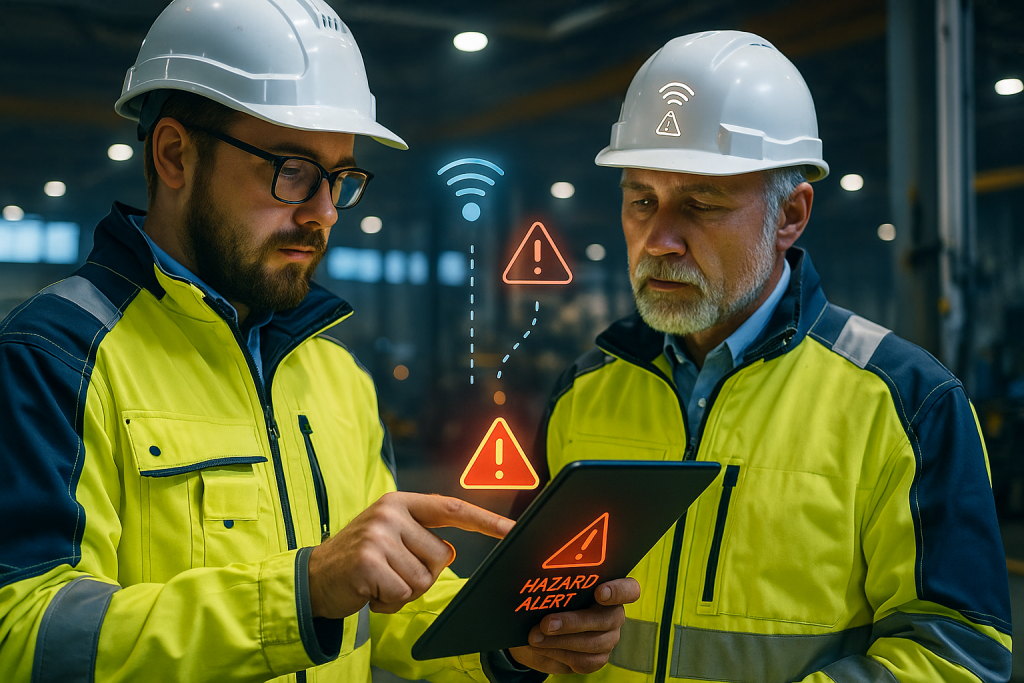
Why Speed Matters in Hazard Detection #
The difference between a close call and an accident often comes down to seconds. Real-time hazard alerts give safety teams the ability to act immediately.
How IoT Hazard Detection Works #
Sensors monitor temperature, air quality, vibration, or equipment status.
Data streams to a central dashboard.
Alerts are sent to mobile devices when thresholds are breached.
Industry Applications #
Manufacturing: Detect machine malfunctions before failure.
Construction: Monitor structural integrity in real-time.
Warehousing: Detect spills or environmental hazards.
In workplace safety, the most critical factor is often time. The ability to detect and respond to a hazard in seconds, rather than hours, can mean the difference between a minor issue and a catastrophic event. Real-time hazard detection, powered by the Internet of Things (IoT), closes this critical time gap, transforming safety from a periodic activity into a constant, automated state of vigilance.
How IoT Hazard Detection Works #
The process is a simple yet powerful loop of monitoring, analysis, and alerting. It creates a digital nervous system for your workplace.
- Sensors Monitor Conditions: Smart sensors are placed on critical equipment or throughout a facility to continuously monitor specific variables—such as temperature, air quality, vibration, or pressure.
- Alerts are Sent Instantly: If any sensor detects a reading that breaches a pre-set safety threshold, the system automatically sends alerts to the mobile devices of supervisors and safety personnel, enabling an immediate response.
ata Streams to a Dashboard: This data is streamed in real-time to a central dashboard, providing a live overview of environmental and operational conditions.
Real-World Industry Applications #
This technology is particularly valuable in high-risk environments, allowing companies to fulfill their duty under Ontario’s OHSA to take every reasonable precaution to protect workers.
- Manufacturing: A vibration sensor on a machine can detect a malfunction hours or days before a catastrophic failure, preventing both injuries and costly unplanned downtime.
- Construction: IoT sensors can monitor the structural integrity of scaffolding, excavations, or concrete curing in real-time, providing an early warning of a potential collapse.
- Warehousing: Environmental sensors can instantly detect a hazardous chemical spill or a dangerous buildup of carbon monoxide from forklifts, triggering alarms and automated ventilation systems.
Related Reading: For hazard categories across industries, see Top 10 Common Workplace Hazards Across Industries
#WorkplaceSafety #EHS #IoT #SafetyManagement #HazardPrevention




